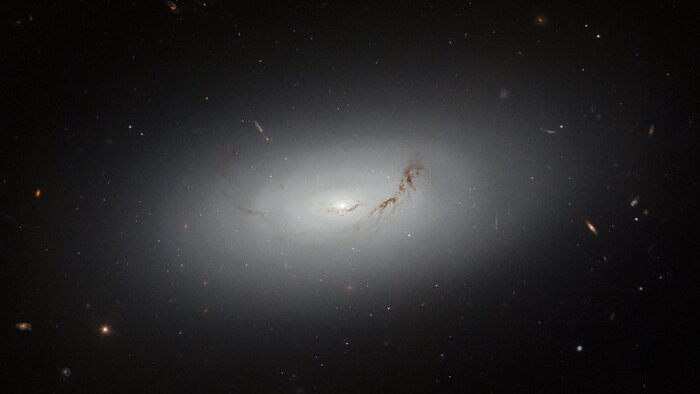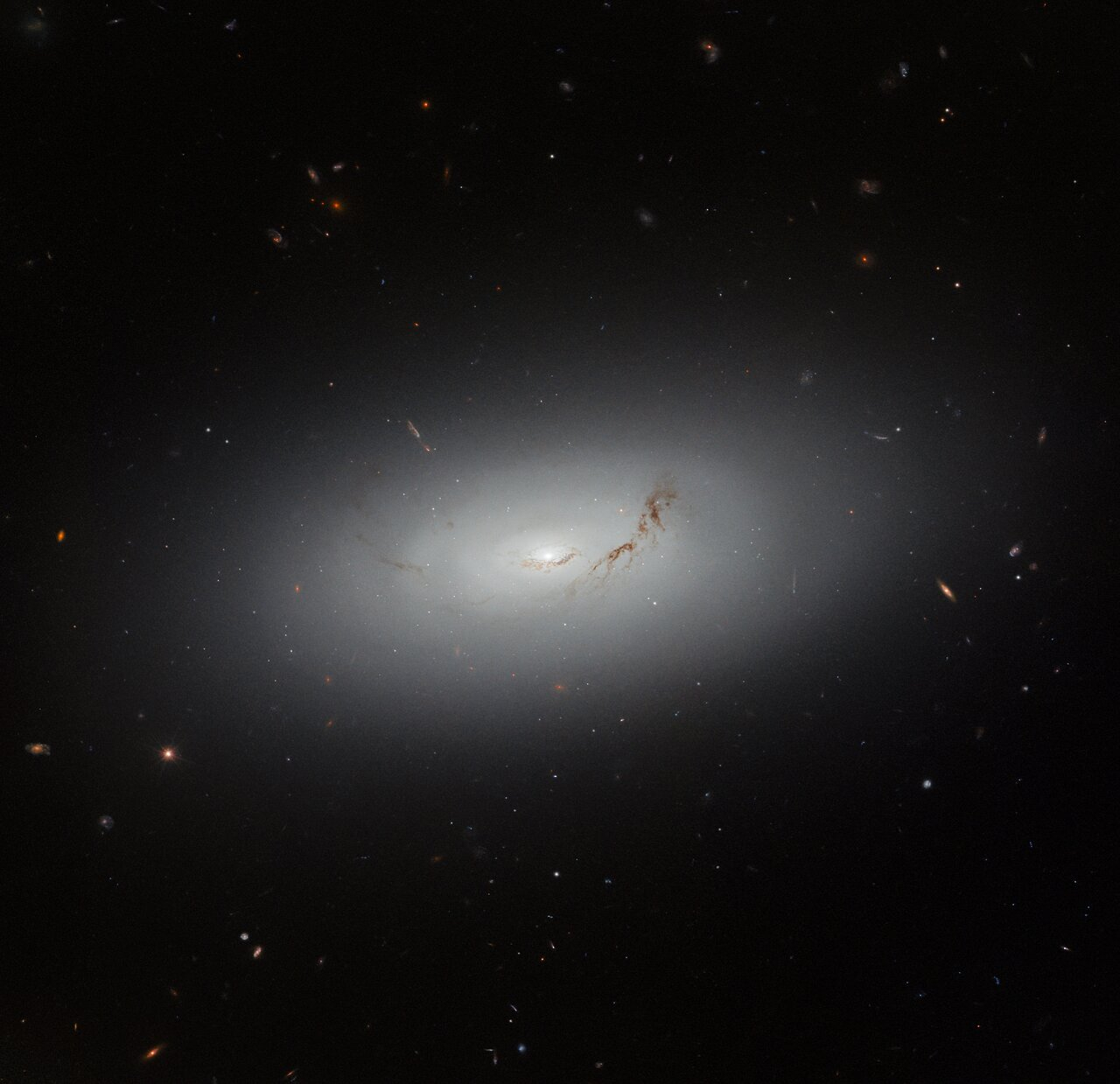Hubble telescope spots glowing galactic disk floating in deep space (photo)
It lives in a constellation named for an 18th century astronomical tool.

A mesmerizing new photo from the Hubble Space Telescope captures the hazy glow of a distant galaxy.
The galaxy, known as NGC 3156, is located about 73 million light-years from Earth in the Sextans constellation. It is categorized as a lenticular galaxy, which is a cross between a spiral and an elliptical galaxy as it boasts a bright central bulge but no distinct twisting arms. Lenticular galaxies are also believed to have either used up or lost most of their interstellar matter, which suggests they are home to older stellar populations.
In the recent photo of NGC 3156, faint concentric ovals appear progressively brighter towards the core when compared to faded edges of the galaxy. Two threads of dark red interstellar dust cut across the galaxy’s disk, circling its central bulge. Relatively few cosmic neighbors are captured in the surrounding area of space.
Related: The best Hubble Space Telescope images of all time!
The Sextans constellation occupies a sparse, relatively dark area of the sky. It is a minor equatorial constellation that belongs to the Hercules family of constellations, and is named after the astronomical tool used to measure the angular distance between two visible objects in the sky.
"Sextants are often thought of as navigational instruments that were invented in the 18th century. However, the sextant as an astronomical tool has been around for much longer than that: Islamic scholars developed astronomical sextants many hundreds of years earlier in order to measure angles in the sky," European Space Agency (ESA) officials said in a statement releasing the new Hubble photo of NGC 3156.

"A particularly striking example is the enormous sextant with a radius of 36 meters that was developed by Ulugh Beg of the Timurid dynasty in the fifteenth century, located in Samarkand in present-day Uzbekistan," ESA officials said. "These early sextants may have been a development of the quadrant, a measuring device proposed by Ptolemy."
Get the Space.com Newsletter
Breaking space news, the latest updates on rocket launches, skywatching events and more!
Sextants have long since been replaced by more sophisticated instruments such as the Hubble Space telescope — a joint mission led by the ESA and NASA — which are able to measure the positions of stars and astronomical objects much more accurately and precisely.
Hubble captured this recent photo, which was released online on September 11, using data from its Advanced Camera for Surveys and Wide Field Camera 3. Hubble has helped astronomers study the galaxy’s position, stellar population (including densely packed globular clusters) and the supermassive black hole at its core.
Join our Space Forums to keep talking space on the latest missions, night sky and more! And if you have a news tip, correction or comment, let us know at: community@space.com.

Samantha Mathewson joined Space.com as an intern in the summer of 2016. She received a B.A. in Journalism and Environmental Science at the University of New Haven, in Connecticut. Previously, her work has been published in Nature World News. When not writing or reading about science, Samantha enjoys traveling to new places and taking photos! You can follow her on Twitter @Sam_Ashley13.









